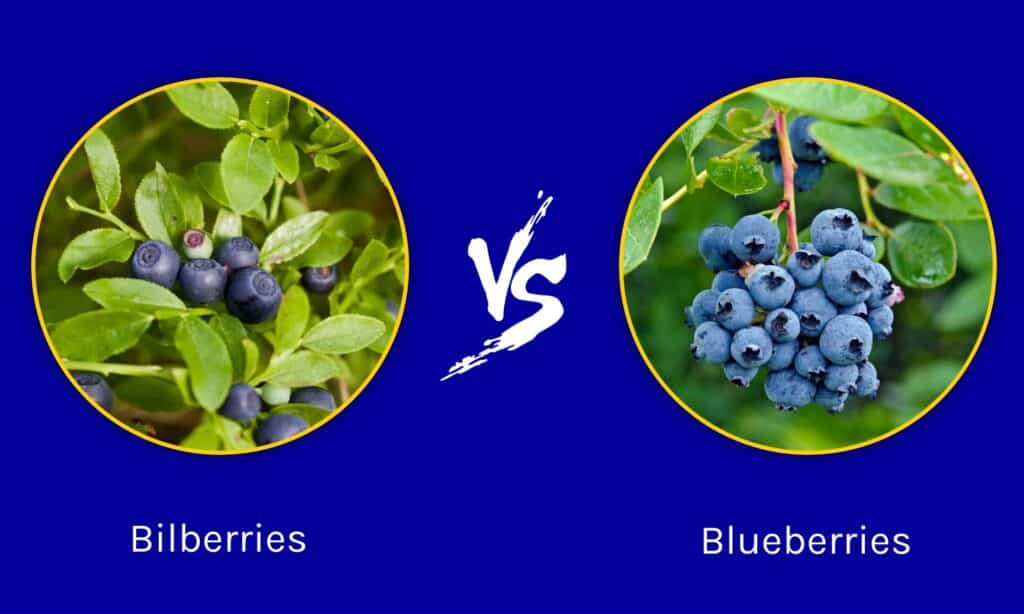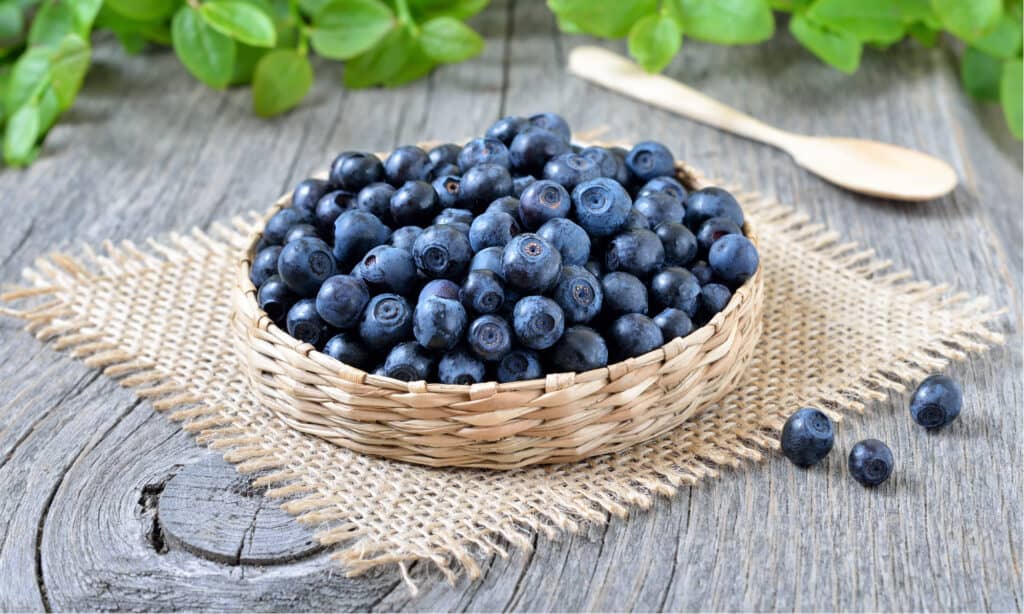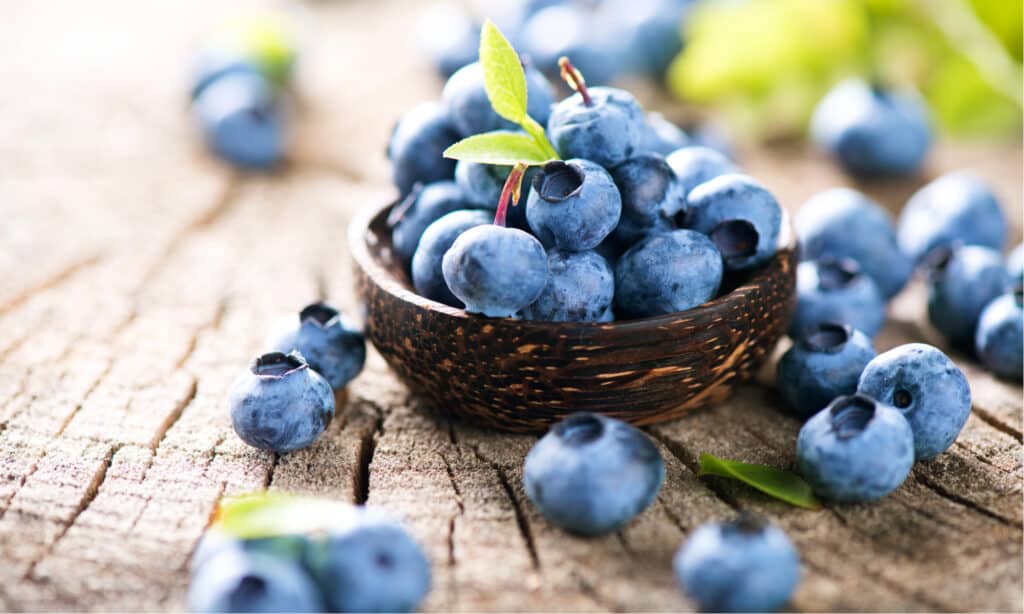Depending on where you live, you may not know all of the differences between bilberries vs blueberries. Are these two types of berries related? Or are they completely different from one another? If you are looking for more information about blueberries and how they compare to bilberries, you’re in the right place.
In this article, we will compare and contrast bilberries and blueberries so that you can understand all of the similarities and differences between them. In addition, we will go over where these berries grow best, including where they are commonly grown. Finally, we’ll go over the differences in flavor between these two berries in case you are interested in cooking or baking with them. Let’s get started now!
Comparing Bilberries vs Blueberries

| Bilberries | Blueberries | |
|---|---|---|
| Classification | Vaccinium myrtillus | Vaccinium corymbosum |
| Description | Round and small berries that are a deep blue, black, or purple color, both on the outside and inside of the fruit. Grows as individual berries rather than clustered, with light green leaves | Round and small berry that is a grayish blue on the outside, but either white or green inside. Grows on a bush in clusters of berries, with deep evergreen leaves |
| Uses | The European equivalent to the blueberry, but full of more antioxidants due to its pigment. Used in jams, baking, cooking, and a variety of medical settings | Popular due to its antioxidants and used in a variety of health food or medical settings. Also used commonly in smoothies, baking, and jellies |
| Hardiness Zones | 3-8 | 3-10 |
| Flavor | Sweet and flavorful with a touch of sour, similar in taste to the blueberry. Tends to be more flavorful, especially wild picked bilberries | Sweet and sour, depending on when they are picked. The more ripe, the sweeter blueberries will be! |
Key Differences Between Bilberries vs Blueberries

The bilberry is typically darker in color compared to the average blueberry, ranging from a deep black to a purplish color compared to the blue gray color of the blueberry.
©Nadezhda Nesterova/Shutterstock.com
There are many key differences between bilberries and blueberries. While they are both related, bilberries and blueberries are found in different locations around the world. Bilberries are often referred to as the European blueberry, or the wild blueberry, given the fact that bilberries are best picked fresh from the wilderness, while blueberries are commonly cultivated commercially.
There are a number of other differences between these berries as well, so let’s dive in and learn more now.
Bilberries vs Blueberries: Classification and Where Grown
Bilberries are found wild in arctic or subarctic locations in Europe, while blueberries are cultivated commercially throughout North America. While they are still related under a similar family branch, they are different species or varieties of berries from one another. For example, the bilberry is classified as Vaccinium myrtillus, while the blueberry is classified as Vaccinium corymbosum.
Bilberries vs Blueberries: Description

When found in the wild or on their plants, bilberries grow as individuals, while blueberries grow in clusters.
©Subbotina Anna/Shutterstock.com
It can be very difficult to tell the difference between a blueberry and a bilberry just by looking at them. However, there are some subtle distinctions that you can use to tell them apart. For example, the bilberry is typically darker in color compared to the average blueberry, ranging from a deep black to a purplish color compared to the blue gray color of the blueberry.
When found in the wild or on their plants, bilberries grow as individuals, while blueberries grow in clusters. The leaves of the blueberry plants are evergreen and darker in color compared to the lighter green leaves of the bilberry plants. Finally, the bilberry is the same color on the outside and the inside, while the blueberry is white or green on the inside, abandoning its distinctive outer hue.
Bilberries vs Blueberries: Uses

The bilberry has more antioxidant power compared to the blueberry.
©Nata Naumovec/Shutterstock.com
Given their familial similarities and flavor profiles, you can use bilberries and blueberries in many similar applications. For example, these two berries are often used interchangeably in a culinary application – it just depends on where you live in the world. In Europe, bilberry jam and pastries are extremely common, while blueberries are popular in smoothies and baked goods in the United States and beyond.
One important thing to note about both of these berries is the fact that they are prized for their antioxidants and other health benefits. However, the bilberry has more antioxidant power compared to the blueberry. This is due to the pigment found inside of the bilberry, also known as anthocyanin, something that the blueberry also has, but not to the same extent.
Bilberries vs Blueberries: Hardiness Zones
Both blueberries and bilberries thrive in similar environments, likely due to their relation to one another. However, the blueberry has more varieties compared to the average bilberry, and therefore it grows in more hardiness zones by comparison. For example, the bilberry thrives in hardiness zones 3 through 8, while the blueberry grows in hardiness zones 3 through 10, depending on the variety.
One of the main reasons that this is a key distinction between these two berries is the fact that blueberries are grown commercially, while bilberries are typically found in the wild and harvested in their natural environment. While you can cultivate your own bilberry plant at home or in a controlled environment, it is not commonly done, especially in comparison to the blueberry.

Depending on the variety of blueberry, these berries tend to be less flavorful in comparison to the average bilberry.
©Maria Dryfhout/Shutterstock.com
Bilberries vs Blueberries: Flavor
A final subtle difference between bilberries and blueberries has to do with their flavor. Depending on the variety of blueberry, these berries tend to be less flavorful in comparison to the average bilberry. Many would argue that this is due to the fact that bilberries are harvested at the peak of freshness, from wild-grown locations, while blueberries are cultivated commercially and often frozen.
The photo featured at the top of this post is © Nata Naumovec/Shutterstock.com
Thank you for reading! Have some feedback for us? Contact the AZ Animals editorial team.






